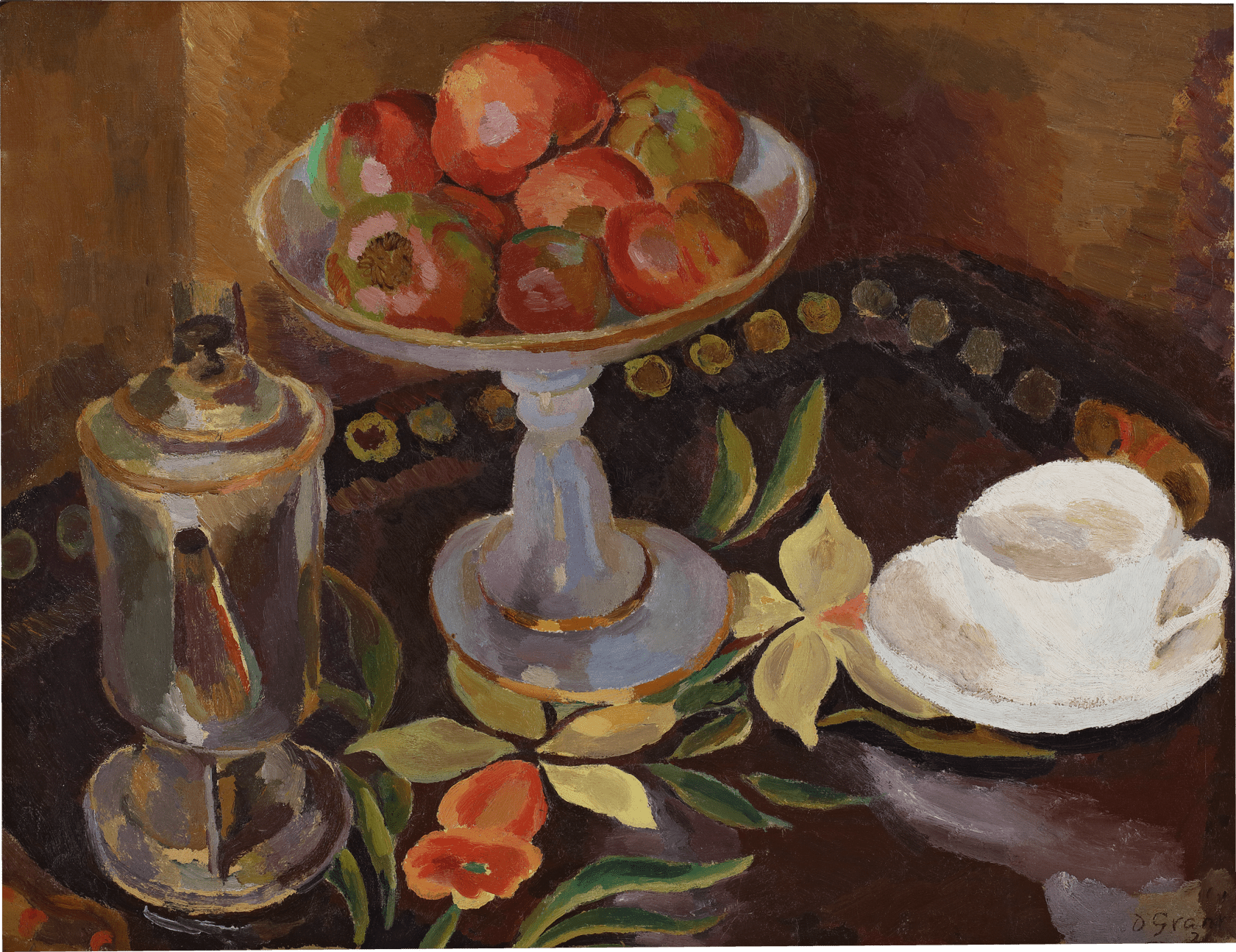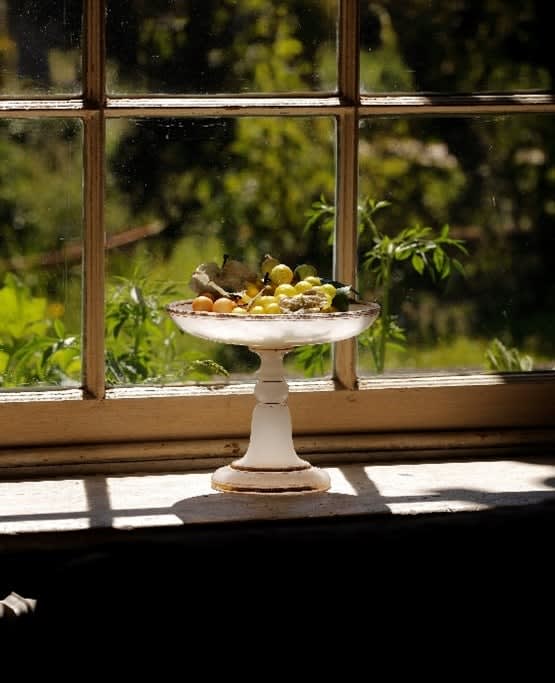This work was painted around the same time as Duncan Grant’s first solo exhibition and shows his daring abandonment of traditional constraints in still-life painting. Boldly painted works like this secured Duncan Grant’s reputation as a central proponent of modern British art and a leading artist of his generation.
Another version of this work, executed on canvas, was likely exhibited at Grant’s first solo exhibition in 1920 at the Carfax Paterson Gallery in Old Bond Street, London [fig. 1]. Grant had originally intended to exhibit the work in the 1919 London Group exhibition but did not complete it in time. A note in the artist’s sketchbook, dated 20th October 1919, lists unfinished paintings in need of completion ahead of the London Group submission date, alongside a list of twenty paintings either ready or to be finished for his 1920 show. This list is accompanied by a small sketch [fig. 2] which relates to the finished oil works, the spontaneity of...
This work was painted around the same time as Duncan Grant’s first solo exhibition and shows his daring abandonment of traditional constraints in still-life painting. Boldly painted works like this secured Duncan Grant’s reputation as a central proponent of modern British art and a leading artist of his generation.
Another version of this work, executed on canvas, was likely exhibited at Grant’s first solo exhibition in 1920 at the Carfax Paterson Gallery in Old Bond Street, London [fig. 1]. Grant had originally intended to exhibit the work in the 1919 London Group exhibition but did not complete it in time. A note in the artist’s sketchbook, dated 20th October 1919, lists unfinished paintings in need of completion ahead of the London Group submission date, alongside a list of twenty paintings either ready or to be finished for his 1920 show. This list is accompanied by a small sketch [fig. 2] which relates to the finished oil works, the spontaneity of which translates particularly in the present work.[1]
The differences between the two compositions are subtle but noteworthy. The principal subjects remain the same; a white teacup and saucer, a compotier containing apples and a silver coffee pot expertly arranged on a tray. The present work, executed on paper, exhibits a greater presence in its solidity of form. After the First World War, Grant exchanged vivid iridescence for more controlled intensity and solidity. His palette, as evidenced here, gained depth and richness which is translated in the integrity of his subjects. As a result, Grant began to luxuriate in the details of design. Here, considered attention has been given to the design of the tray, and the central daffodil design is afforded significant prominence within the overall composition. The compotier, which was given to Grant by Barbara Bagenal (née Hiles) and remains part of the Charleston Trust Collection today [fig. 3], became a favoured subject by the artist and is depicted in several other paintings both by Grant and his partner Vanessa Bell.[2]
Equally characteristic of works by Grant at this date is the viewpoint. Engaging with multiple perspectival vantage points, Grant’s skillful foreshortening of the coffeepot in the foreground offers a sense of immediacy, further perpetuated by the cropping of the tray in the foreground. Coffeepots remained another favoured still-life subject throughout Grant’s long career; in his 1920 show alone, he exhibited at least three daringly modernist still lifes depicting coffeepots.[3]
[1] R. Shone, Modern British Art Evening Sale. London: Christies, 2012.
[2] Barbara Bagenal existed on the fringes of the Bloomsbury Group, having a brief affair with Clive Bell and camping in a tent on the lawn at Charleston in the summer of 1917, shortly after Vanessa Bell and Grant moved there.
[3] Paintings by Duncan Grant. London: Wm. B. Paterson and Carfax & Co., Ltd, 1920. See; The Tray no. 7; Coffee pot. No.1. no. 9; Coffee pot. No.2. no. 30.



















